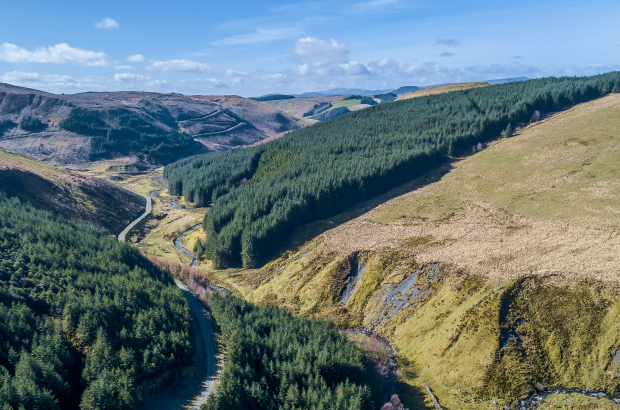Land Business Update | Week Commencing 12 May 2025
Farming & food
UK – US trade agreement (UK)
In one of the first trade agreements that the US has signed recently, the UK government says that the framework that it has agreed has protected our farmers and established a number of useful principles – reciprocity, no reduction of standards – on which to negotiate on other products. The agreement includes the following:
Beef – a reciprocal agreement that allows 13,000 tonnes of US beef to be imported without tariffs (per year, we think), with up to the same amount exported from the UK to US, again with no tariffs. Importantly, there is no change to UK environmental and welfare standards so no hormone treated beef (or chlorine washed chicken) will be imported. It is unclear how much US beef we might import above the tariff-free limit; currently US imports are less than 1% of total UK imports and as around 80% of US beef is produced with hormones that is ruled out.
Ethanol – the UK tariff on imports from the US will be removed.
In response, the NFU said that agriculture should not be ‘sacrificed’ for other sectors. The UK had faced a 10% tariff on all goods it exported with higher tariffs on particular sectors (e.g., cars (but the higher penal tariffs are now reduced for 100,000 UK car exports per year) and steel (for which the penal tariff has now been removed); however, the end result is that tariffs are still higher than before Liberation Day. Responding to the NFU and others, the government said that the agreement was a good deal for UK farmers, citing the reciprocity, potentially giving them access to the large US market (above the tariff free amount) and with no under cutting of our environmental or welfare standards. On bioethanol, Steve Reed said that less than 1% of UK agricultural land is currently used to grow crops that go into ethanol production and that there are alternative markets available, such as for biodiesel. He also said that the principles it established – reciprocity, no reduction of standards –could be used for other sectors, and mentioned whiskey, gin and chocolate.
The government also made an agreement with India, which will reduce tariffs on whiskey, salmon and lamb; it has been welcomed by the NFU, which said there were safeguards for sectors although it still has concerns about the standards used to produce some of India’s products.
Farming Equipment and Technology Fund (FETF) – get ready for the new round opening on 29 May (England)
The Fund provides grants of up to £25,000 to invest in machinery that boosts farm productivity. There are 183 different items listed under three themes – productivity, slurry management and animal health and welfare. Items that are likely to be popular include:
Direct drill / air drill for establishing cover crops / inter row companion drill / variable rate controller for older seed drills / cover crop rollers / robotic silage pusher / rainwater harvesting tanks (productivity)
Robotic slurry collectors / flow rate monitoring equipment / low-emission spreaders such as dribble bars (slurry management)
Piglet creeps / mobile cattle and sheep handling systems / cooling systems for poultry housing (animal health and welfare)
The funding will be allocated to the highest scoring applications, working down the list until all the money has been spent. The application window closes on 10 July. Please contact Alice Johnson if you would like more details or to discuss making an application.
A separate £5m Investor Partnerships competition is also opening, on 2 June, to attract private investment into the food and farming sector to bring cutting edge technology to market. The £21m Accelerating Development of Practices and Technologies (ADOPT) competition is also open for farmers to test new technologies on their own farms.
Limited SFI reopening for applications that had started online on or after 12 January (England)
This is good news for the about 3,000 people who had started an online application without submitting. It applies to application started after 12 January and before the scheme was closed on 11 March. The applicants will be able to complete and submit their application for an agreement within a six week window. These agreements will be subject to a £9,300 per year limit – a new restriction but which is apparently equivalent to the average payment to existing agreement holders and does not include the SFI management payment which will be paid in addition. The government has introduced the limit to balance fairness to applicants and ensuring the prudent use of public money (which will come from other areas of the Defra budget).
This reopening is happening as Defra said that there was a system error, which was that the message that said ‘if we need to close applications, we will give you six weeks’ notice’ should not have appeared online for people who had saved an application but not submitted it. The 3,000 people affected will be contacted by Defra.
More widely, the scheme remains closed to applications, apart from for a few exceptions including for SFI Pilot agreement holders. The government’s aim is to ‘reset’ the scheme, so that it meets the needs of farmers and the environment, with details to be published this summer after the spending review.
Natural capital & environment
Impacts of the driest start to spring in 69 years (UK)
Rainfall was just a quarter of its long-term average in March and was half of the average in April. It has been the driest since 1929 in the north east and north west. It is having a wide range of impacts on farming, including affecting establishment, plant growth and use of irrigation, and on land use (see the wildfire article below). Many farmers are already expecting yields to be considerably below average. For wildlife, amphibians are particularly at risk with the puddles and ponds in which they lay their eggs dried up before the eggs hatch. It has also affected the breeding patterns of insects and invertebrates, which is having a knock-on effect on migratory birds, which rely on them as a food source. These changes to the weather are likely to become more frequent – so reducing emissions remains critical and also adapting to them. For farming, making soil as resilient to droughts (and floods) as possible is the most important action that can be taken on all farms. For wildlife, leaving some areas of vegetation long and uncut provides shade, and creating ponds or wet scrapes can also help. A good rule of thumb is to make space for wildlife on at least 10% of land.
Wildfires in 2025 UK already at high (UK)
The area of the UK burnt by wildfires so far this year (29,200 hectares or 292 km2 burned by 80 fires which are over 30 hectares in size) is already higher than the total for any year in more than a decade, according to figures from the Global Wildfire Information System, which has recorded burnt area since 2012. It is attributed to the prolonged dry sunny weather in March and April. Wildfires are common in the early spring as there is plenty of dead or dormant vegetation at the end of winter that can dry out quickly. Incidents of wildfires are now expected to reduce due to the switch to wetter conditions (if historical weather patterns occur). Due to the conditions, the public are being advised to follow The Countryside Code and never light open fires, such as campfires or BBQs, in the countryside. If you discover a fire in the countryside, get to a safe place and call 999.
Wood planting grants – submit eligibility details before 30 June (England)
The Forestry Commission has recommended that applicants for woodland creation funding under the England Woodland Creation Offer (EWCO) submit their eligibility details in full by 30 June. Applications can be made after this date but the Commission cannot guarantee that a grant will be agreed before the 2025 / 26 planting season.
Update of the Woodland Carbon Code (UK)
The planned update – this will be version 3 – reflects the commitment to continuous improvement of the Code and ensuring it remains aligned with global standards. Proposals include:
Providing clearer information on requirements and guidance.
Updating rules to encourage more projects on crofted land.
Changing the minimum duration for projects in line with international standards.
Updating data on the additionality cashflow spreadsheet following recent research and consultation.
The consultation ends on 1 June and the new version is planned to be launched on 1 July, with a three-month transition period until the new Code applies in October. Please contact Sasha Laing in our woodland team if you would like to discuss the Code or a carbon project.
Consultation on raising integrity in voluntary carbon and nature markets (UK)
The consultation asks for views on the government’s six voluntary carbon and nature market integrity principles, which are:
- Use credits in addition to ambitious actions within value chains.
- Use high integrity credits.
- Measure and disclose the planned use of credits as part of sustainability reporting.
- Plan ahead – regulated financial institutions should work out whether there is a role for credits in their transition plans.
- Make sure any green claims are accurate and use appropriate terminology.
- Co-operate with others to support the growth of high integrity markets.
Rural economy & property
Planning and Infrastructure Bill nature levy: A licence to kill nature (mainly England and Wales)
A large group of economists, former government advisors and conservationists have written to MPs to ask them to oppose the proposed Nature Levy in the Bill. They say that the proposal allows companies to ‘buy out’ of their legal obligations to nature, and in doing so, dismantles key safeguards that have protected nature for decades. They continue that under the proposed scheme, Natural England’s position will be deeply conflicted. Natural England will write the conservation plans, and assess their success, all the while being reliant on the new Nature Levy income to fund its own administration. They say this is a clear conflict of interests, with no independent scrutiny, and no mechanism to ensure protection for rare species. They also say that it contains an inbuilt under-delivery mechanism, as the levy is adjusted downwards according to development viability, rather than set to cover the true ecological costs of damage. This will lead to nature losing out when economic pressures arise. They also rebuff the argument that wildlife laws are delaying house building, saying it is false and that delays are driven by under-resourced planning authorities, infrastructure bottlenecks, and industry-led viability constraints. Separately the Office for Environmental Protection has also said that the Bill would reduce the level of environmental protection compared with existing environmental law and that safeguards for protected nature sites should be included.






